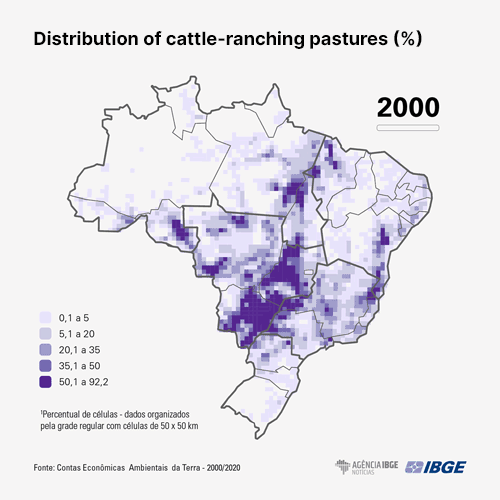Deforestation alerts in the Brazilian Amazon corresponded to a total area of 1,455 square kilometers in September, 47 percent more than the same month last year.
Satellite data from Inpe, Brazil’s national space research institute, shows that accumulated deforestation in the first nine months of 2022 has already surpassed the entirety of last year.
Climate watchdog Observatório do Clima calculates that September’s deforestation alone represents the emission of 70 million tons of carbon dioxide, the equivalent to Austria’s emissions for a whole year.
Separately, Brazil’s official statistics agency IBGE announced today that Brazil lost 7.9 percent of its forested area between 2000 and 2020. The area used for agriculture grew 50.1 percent in the same period, and pastures increased 27.9 percent. Its research showed that just under half of the forest lost in the 20-year span was transformed into pasture.



The IBGE notes the most accentuated transitions occurred on the outskirts of the Amazon forest. The northern state of Pará saw the biggest decrease in forest area and the biggest absolute increase in areas dedicated to pasture.
Between 2018 and 2020, some 70,000 square kilometers of Brazil’s land underwent a change in classification, with Pará once again standing out: expanding pastures by 4,501 square kilometers in this small time frame.
The Center-West state of Mato Grosso saw the biggest area transformed into farmland between 2018 and 2020: 5,593 square kilometers. Despite being one of the most biodiverse parts of Brazil — home to parts of the Amazon forest, the Pantanal tropical wetland, and the Cerrado savanna — the state is now best known as “Brazil’s Granary,” being the country’s leading producer of soy, corn, beef, and cereals.
In August, a separate study conducted by environmental monitoring platform MapBiomas showed that Brazil lost 13.1 percent of its total native vegetation between 1985 and 2021.


 Search
Search






































